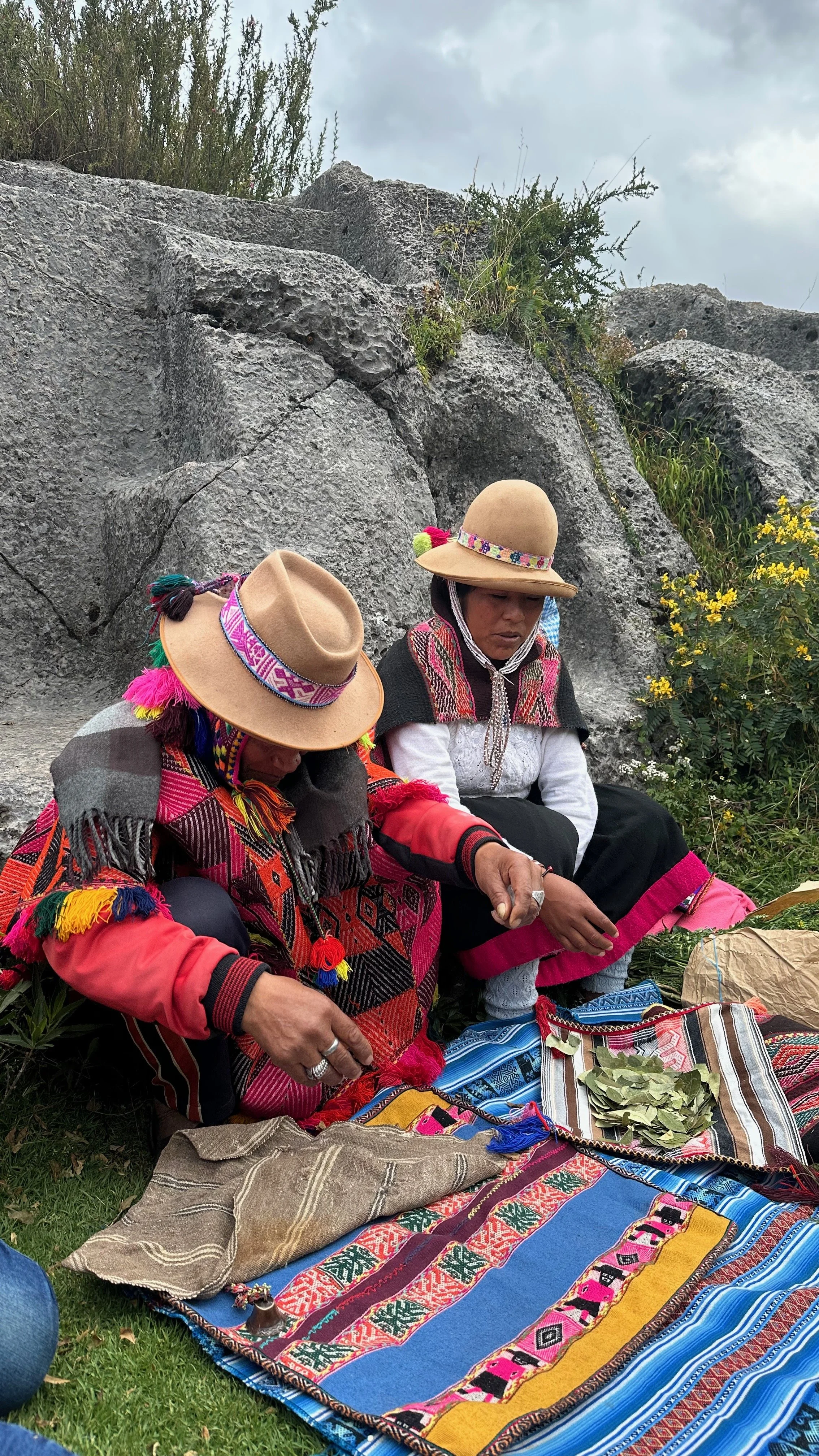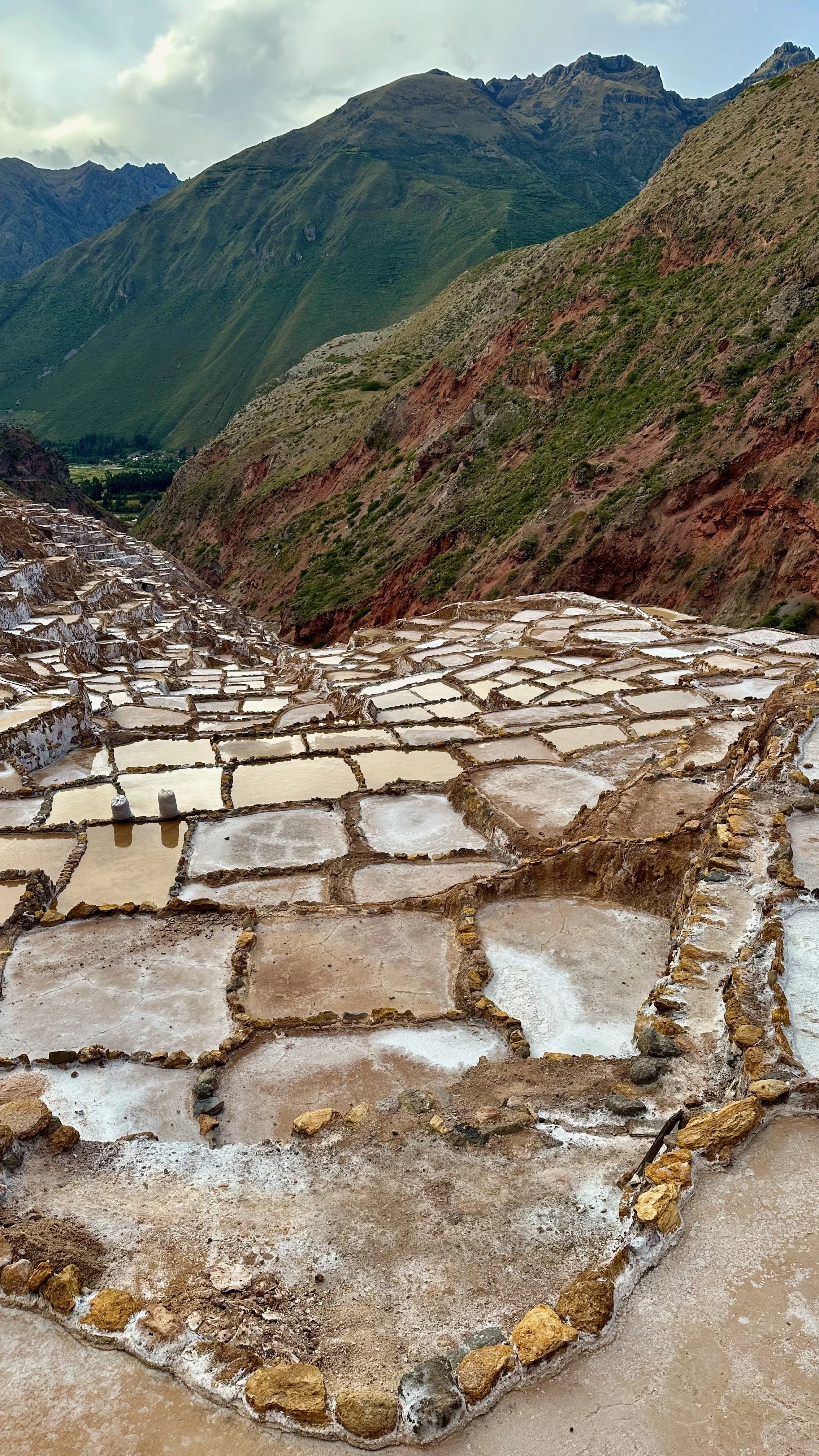Muña, Coca, and Me: Plant Lessons and Ancient Voices
I spent my 40th birthday in the mountains of Peru, tip-toeing through medicinal gardens, sipping muña tea by open fires, and listening to the stories of plants told in Quechua and Spanish. I didn’t go to “celebrate” in the traditional sense—there were no balloons, no cake, no Machu Picchu, no big dinner plans. I went to remember. To root down. To listen to the Earth and what it wanted to teach me as I crossed this personal threshold.
This was not just a trip. It was a pilgrimage.
I traveled to the Sacred Valley—specifically Ollantaytambo and the surrounding mountain villages—where I stayed with a local family, huddled under thick blankets at night, and spent my days learning from women who know the land like an old friend. Some of the most powerful lessons came not through language, but through gesture, observation, and presence.
Muña, Coca, and the Medicine of Altitude
I met muña in the wild—growing in rocky soil, kissed by high-altitude winds. I tasted coca fresh from the plant, not powdered or processed, but soft and bright and alive. I learned that the female muña is stronger and often overlooked. That altitude changes the potency of each leaf. That some plants only reveal their properties when gathered with prayer and intention.
One Quechua elder ran her fingers across a bundle of herbs and said, “The plants speak if you don’t rush them.” That stayed with me.
I didn’t go to “celebrate” in the traditional sense—there were no balloons, no cake, no Machu Picchu, no big dinner plans. I went to remember.
But not everything was solemn or sacred in a heavy way. One of my favorite moments was walking alongside llamas and alpacas in the cool mountain air, guided by a local herbalist and educator who shared his deep knowledge of the land and the plants growing around us. We moved slowly, with the animals setting the pace—stopping to graze, to sniff, to simply be. It was one of the most peaceful, joy-filled parts of the trip. Being among them felt like stepping into a rhythm outside of time, where presence is the only agenda.
The Birthday Was the Ceremony
On the morning of my birthday, I stood in silence on a cliff above the valley, the air thin but charged. I felt the presence of ancestors—mine, and those of the land. I cried, not because I was sad or even overwhelmed, but because my body recognized something ancient. Like my cells remembered this. Like I’d been here before.
That day, I sat in circle with a healer who had spent decades working with coca. She read the leaves in a sacred ritual—a coca k’intu—offering guidance not just for my year ahead, but for my being. The messages were simple but profound: stay close to the land. Trust your pace. Let the old stories die off so something fuller can take root.
Coming Home with the Plants (and the Lessons)
I returned to São Paulo with bags full of muña, tokosh, and a few other sacred herbs—along with stories, smells, and the sense that I had been realigned. Something shifted in me at 40. I am no longer reaching outward in the same way. There is more silence in me now, more willingness to wait and listen. To not force the blooming.
Andean herbalism taught me that medicine isn’t always dramatic. Sometimes it’s a hot tea brewed slowly. A walk without headphones. A gentle root dug from the earth at just the right moment. Sometimes medicine is remembering who you are—and who you’ve always been.
This was not a birthday trip. It was a homecoming.








